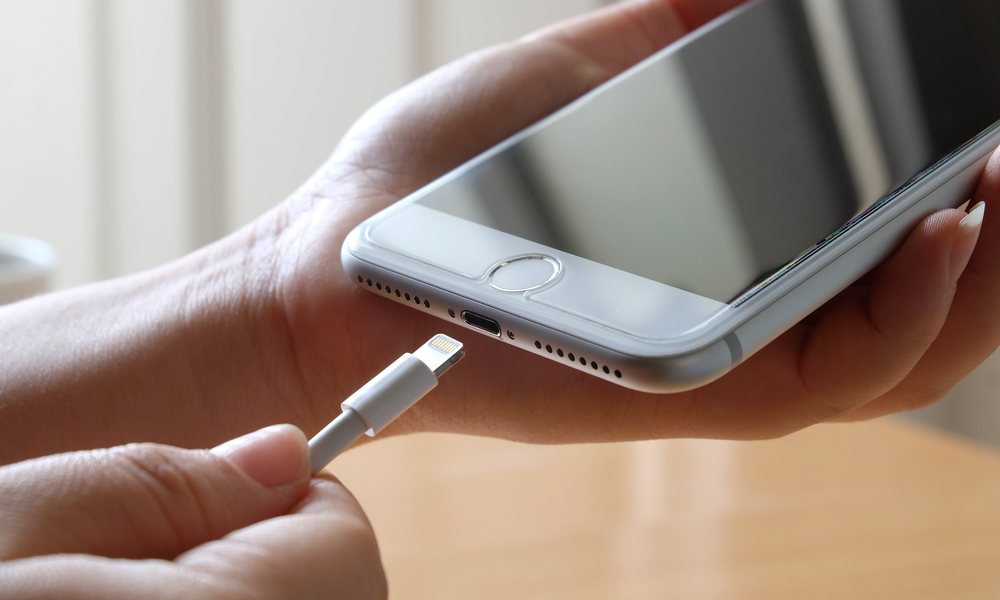2019 iPhones Will Not Only Stick with Lightning, But Will Still Include Standard 5W USB Adapter
 Credit: PIMPAN / Shutterstock
Credit: PIMPAN / Shutterstock
Toggle Dark Mode
Apple has long had a love affair with its own proprietary connectors for its mobile devices, going back to the 30-pin Dock Connector of the iPod and early iPhone era, and then phasing that out in 2012 in favor of its own Lightning connector rather than adopting the micro USB standard of other phones.
After the advent of USB-C, however, many analysts began speculating that Apple would eventually replace its own proprietary Lightning ports on its iPhone and iPad devices with the emerging USB-C standard, especially after Apple adapted that standard exclusively in its MacBook lineup two years ago.
Still, Apple has remained fairly intransigent on moving away from Lightning en masse. Although the company did make the switch to USB-C in last fall’s iPad Pro lineup, leading many to speculate that this was the beginning of the end for the Lightning port, Apple’s move here was a necessary concession to the iPad Pro’s target market of professionals who would expect interconnectivity with cameras and displays — a need not shared by Apple’s iPhone or even consumer-focused iPad lineup.
So it’s probably not a big surprise that Apple’s 2019 iPhones are still very likely going to use the Lightning connector, if the recent report by Japanese blog Mac Otakara is to be believed. What’s more surprising, however, is that the report claims that Apple will still be bundling the same old five-watt power adapter and USB-A to Lightning cable that’s been bundled with iPhones since the 2012 iPhone 5, despite the much faster USB-C PD charging speeds that have been available on current iPhone models for over a year now.
In fact, several rumours last year suggested that the 2018 iPhone lineup would include 18-watt USB-C fast chargers, along with Apple’s USB-C to Lightning cable. However, that obviously turned out not to be the case. Although some analysts suggested that was simply due to Apple’s inability to manufacture a sufficient quantity of adapters, the rumoured 18-watt adapters failed to make the promised appearance on the shelves at Apple Stores, suggesting that if Apple did have any plans for a new iPhone charging brick, they have been significantly delayed or even scrapped altogether.
Interestingly, the report also cites the availability of 7.5-watt wireless charging as part of the reason why only a five-watt adapter is being included, suggesting that part of Apple’s strategy — in addition to keeping costs down, of course — may be to push users to wireless charging, rather than relying on wired solutions. However, it also seems likely that Apple wants to avoid users perceiving wireless charging as being significantly slower than wired charging, especially as it prepares to finally debut its own wireless charger. Either way, the five-watt adapter is more than sufficient for overnight charging of even the most power-hungry iPhone model, and slower charging speeds also offer some benefits in terms of overall battery life.
Mac Otakara also suggests that Apple’s resistance to switching to USB-C may no longer be simply about a technical preference for the Lightning port itself, but also about the need to bundle USB-C accessories, including EarPods with a USB-C connector and a USB-C power adapter, which would increase costs. On the flip side, of course, Apple also benefits from keeping its MFi program alive, charging licensing fees to accessory partners who want to use the Lightning connector, and the company only recently allowed third-parties to produce and sell their own USB-C to Lightning cables, using a new C94 Lightning connector that Apple introduced to its partners last fall.
[The information provided in this article has NOT been confirmed by Apple and may be speculation. Provided details may not be factual. Take all rumors, tech or otherwise, with a grain of salt.]






